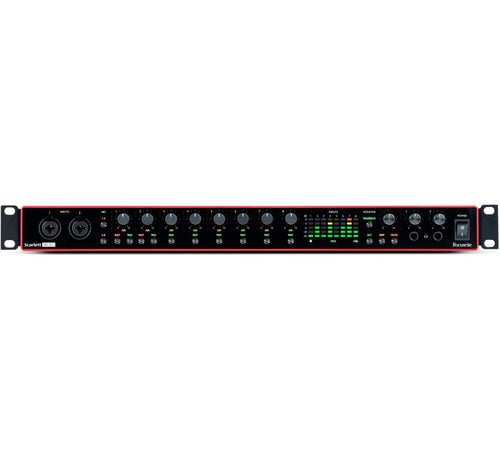Focusrite Scarlett 18i20 3rd Gen USB Audio Interface Review
Focusrite Scarlett 18i20 3rd Gen Review
Focusrite Scarlett 18i20 3rd Gen Review
The Focusrite Scarlett 18i20 is the largest of the six Scarlett-line Focusrite audio interfaces. The Focusrite Scarlett 18i20 features the same signature red-and-black chassis as its smaller siblings, but its power requirements and rackmount capability make it an audio recording interface much more suited for integration with permanent studio installations. It includes a single IEC power cable, as well as a USB-C cable for snug connection to any USB 2.0 or USB 3.0 port on Mac and Windows computers.
I/O Ports
The Focusrite Scarlett 18i20 comes with eight XLR/TRS Combo inputs, two of which are accessible via the front panel via microphone/instrument combo connectors. The rear panel features six additional microphone inputs, as well as eight line inputs; users may connect line inputs and microphones concurrently and toggle between the two, but the interface is limited to eight inputs total. For access to the extra 10 inputs, you’ll need to bring your own ADAT- or S/PDIF-compatible equipment and connect it to the corresponding ports in the rear of the interface.
On Par With The Best
The microphone preamps and converters on the Focusrite Scarlett 18i20 have very similar specs to those on my Apollo x8, with a comparable gain range of 56 dB and a maximum 24-bit/192 kHz AD/DA conversion rate. These stats more or less mean that the 18i20 is capable of recording at or above the industry standard for audio resolution at a level comparable to that of interfaces two, three, and even four times its price. While the technical reality is a bit more complicated than that, as all-in-one devices like the 18i20 often make technical compromises for the sake of saving space and cutting costs, the 18i20 should still have no trouble producing high-quality files that are up to industry spec.


